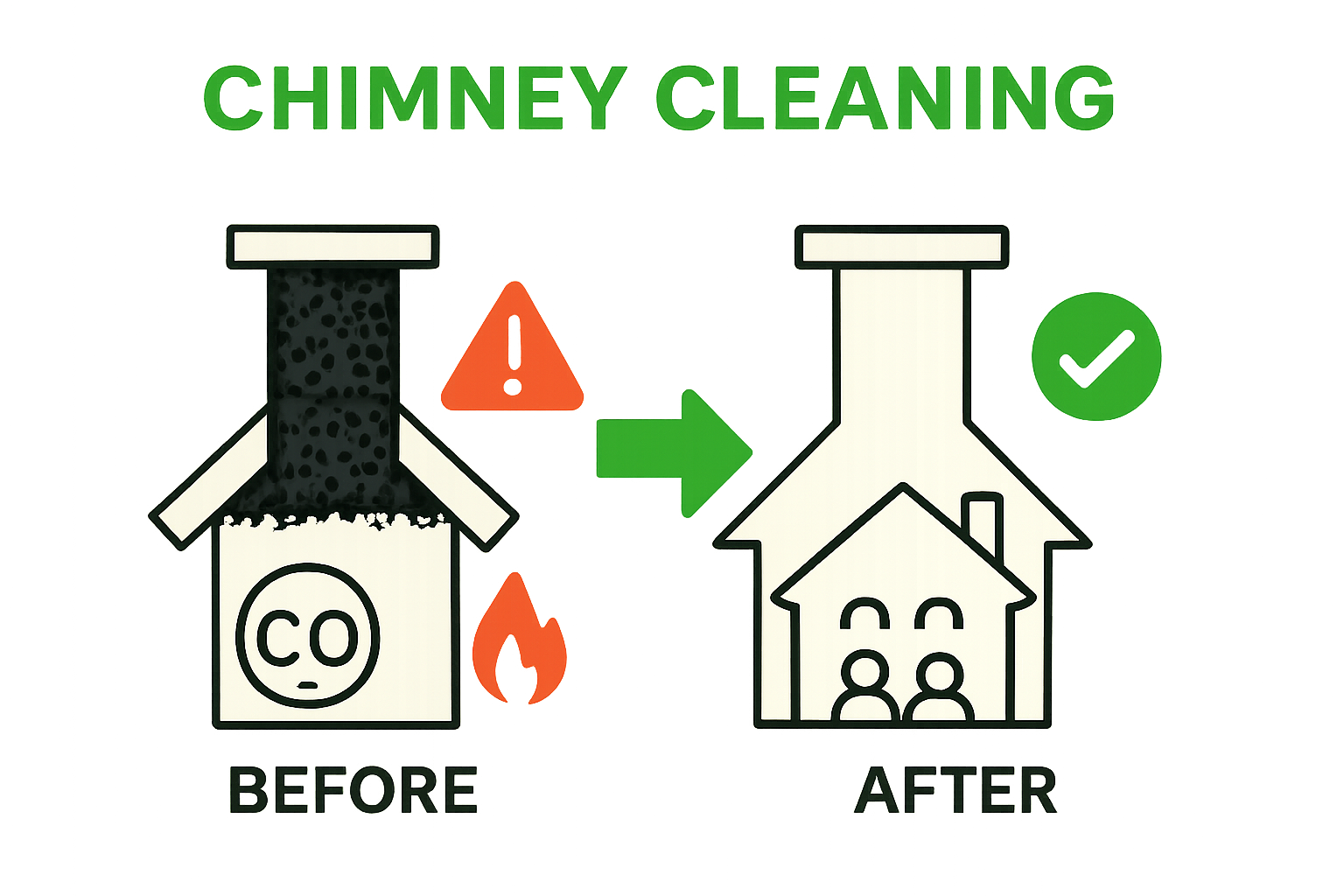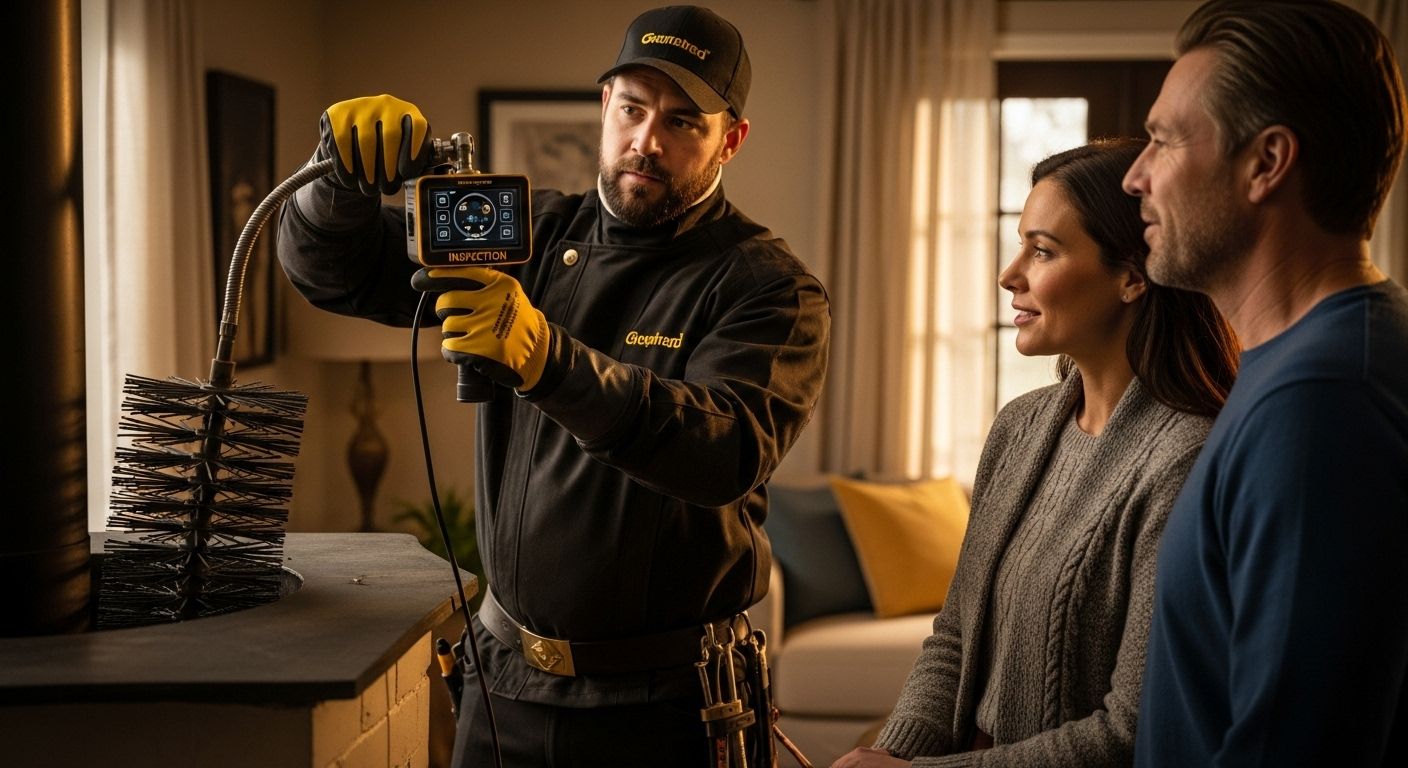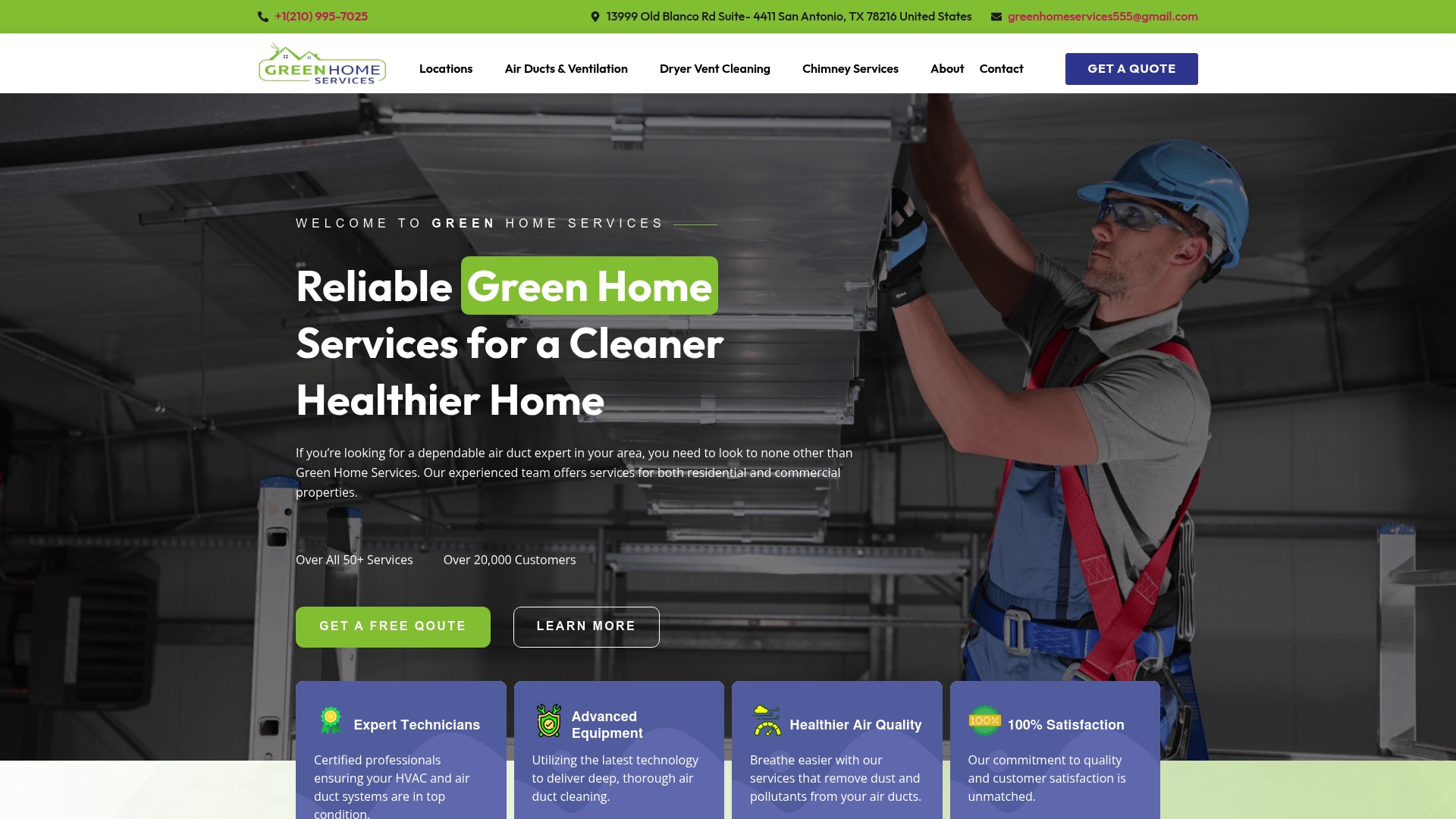Chimney sweeping might seem like old-fashioned housework, but its impact is bigger than most people imagine. Experts report that creosote buildup is responsible for thousands of house fires every year in the United States. Oddly enough, what keeps a chimney looking spotless on the outside often hides the biggest dangers on the inside. Find out how one overlooked routine could be the difference between a warm winter and a serious disaster.
Table of Contents
- Defining Chimney Sweeping: What It Entails
- The Importance of Chimney Sweeping for Home Safety
- How Chimney Sweeping Works: Tools and Techniques
- Key Concepts in Chimney Maintenance and Safety
Quick Summary
| Takeaway | Explanation |
|---|---|
| Regular chimney sweeping prevents fires. | Regular cleaning removes creosote, a flammable substance, reducing fire hazards in your home. |
| Chimney maintenance improves air quality. | Clean chimneys prevent toxic gases and particulates, ensuring healthier indoor environments. |
| Schedule annual inspections for safety. | Annual professional inspections identify potential issues and vulnerabilities in your chimney system before they become problems. |
| Use specialized tools for effective cleaning. | Professional sweeps utilize advanced tools to thoroughly clean hard-to-reach areas, ensuring comprehensive maintenance. |
| Look for signs of chimney issues. | Indicators like soot accumulation or unusual odors signal the need for immediate professional chimney maintenance. |
Defining Chimney Sweeping: What It Entails
Chimney sweeping is a specialized maintenance procedure designed to clean and maintain the interior of chimneys, ensuring safe and efficient fireplace and heating system operation. At its core, this process involves removing accumulated soot, creosote, and other potentially hazardous debris that can build up inside chimney flues and passageways.
The Fundamental Purpose of Chimney Cleaning
The primary objective of chimney sweeping goes beyond simple aesthetic maintenance. According to the Centers for Disease Control and Prevention, the process plays a critical role in preventing potential fire hazards and maintaining indoor air quality. Creosote, a highly flammable byproduct of wood combustion, can accumulate in layers within chimney walls, creating significant risks if not professionally removed.

Key Components of Professional Chimney Sweeping
Professional chimney sweeping involves several intricate steps that require specialized tools and expertise. Technicians utilize specialized brushes, vacuum systems, and inspection equipment to thoroughly clean and assess chimney conditions. The process typically includes:
- Comprehensive visual inspection of chimney structure
- Mechanical removal of soot and creosote deposits
- Identification of potential structural vulnerabilities
- Evaluation of potential blockages or obstructions
Homeowners interested in understanding more about this critical home maintenance procedure can learn about chimney inspection processes specific to their region and heating systems. By investing in regular chimney maintenance, residents can significantly reduce potential safety risks and ensure optimal performance of their home heating infrastructure.
The Importance of Chimney Sweeping for Home Safety
Chimney sweeping serves as a critical preventative maintenance procedure that directly impacts home safety, protecting residents from potential fire hazards and maintaining optimal indoor air quality. While many homeowners overlook this essential service, understanding its significance can prevent catastrophic risks associated with neglected chimney systems.
Fire Prevention and Risk Mitigation
The most critical aspect of chimney sweeping involves preventing dangerous fire scenarios. According to the U.S. Environmental Protection Agency, accumulated creosote deposits represent a significant fire risk. These thick, tar-like substances can rapidly ignite when exposed to high temperatures, potentially causing devastating structural fires that threaten entire homes. Regular professional cleaning removes these hazardous accumulations, dramatically reducing the probability of unexpected combustion.
Indoor Air Quality and Health Considerations
Beyond fire prevention, chimney maintenance plays a pivotal role in preserving indoor air quality. Unclean chimneys can become breeding grounds for harmful particulates, mold, and dangerous gases like carbon monoxide. Professionals conducting thorough chimney inspections help homeowners understand critical safety protocols that protect respiratory health and prevent potential toxic exposures.
Key health and safety risks associated with neglected chimneys include:
- Potential carbon monoxide poisoning
- Increased respiratory illness risks
- Reduced heating system efficiency
- Structural damage to home infrastructure
Homeowners should recognize that chimney sweeping represents more than routine maintenance. It is a proactive investment in family safety, home preservation, and long-term property protection. By scheduling regular professional inspections and cleanings, residents can ensure their heating systems operate safely and efficiently while minimizing potential health and structural risks.
To help clarify the differences between key risks, here is a comparison of the main health and safety risks associated with neglected chimneys and how professional chimney sweeping addresses them.
| Risk | Description | Addressed by Chimney Sweeping? |
|---|---|---|
| Fire Hazard | Creosote buildup can ignite, causing house fires | Yes |
| Carbon Monoxide Exposure | Blocked chimneys can lead to dangerous gas entering the home | Yes |
| Respiratory Illness | Soot, particulates, and mold impact indoor air quality | Yes |
| Reduced Heating Efficiency | Debris and buildup restrict airflow and reduce performance | Yes |
| Structural Damage | Moisture and buildup can damage chimneys and surrounding areas | Yes |
How Chimney Sweeping Works: Tools and Techniques
Chimney sweeping represents a sophisticated maintenance procedure that requires specialized equipment, technical expertise, and meticulous attention to detail. Professional technicians employ a comprehensive approach to thoroughly clean and inspect chimney systems, ensuring both safety and optimal performance.
Professional Equipment and Specialized Tools
According to the Centers for Disease Control and Prevention, chimney sweeping involves a range of specialized tools designed to effectively remove soot, creosote, and debris. Professional chimney sweeps utilize advanced equipment that allows them to access and clean hard-to-reach areas within complex chimney structures. Key tools in a professional chimney sweep’s arsenal include:
- Flexible chimney brushes with varying bristle materials
- Extendable cleaning rods for comprehensive reach
- High-powered vacuum systems with HEPA filtration
- Specialized cameras for detailed internal inspections
- Protective gear including respirators and specialized clothing
Comprehensive Cleaning and Inspection Methodology
The chimney sweeping process goes far beyond simple surface cleaning. Technicians follow a systematic approach that involves thorough visual and mechanical inspection. Learn more about detailed chimney cleaning techniques to understand the complexity of this essential home maintenance procedure.
Professional chimney sweeps typically conduct a multi-stage cleaning process that includes:
- Initial visual and camera-assisted structural assessment
- Mechanical removal of accumulated creosote and soot
- Detailed evaluation of potential structural vulnerabilities
- Comprehensive cleaning of chimney flue and surrounding components
The intricate nature of chimney sweeping requires not just technical skill but also an understanding of building structures, combustion processes, and potential safety risks. Homeowners should recognize that this is a specialized service best performed by trained professionals who can identify and address potential issues before they become significant problems.
Key Concepts in Chimney Maintenance and Safety
Chimney maintenance represents a complex intersection of building safety, environmental health, and preventative home care. Understanding the fundamental principles behind effective chimney management can help homeowners protect their property and ensure optimal heating system performance.
Comprehensive Inspection and Risk Assessment
According to the U.S. Environmental Protection Agency, annual professional inspections are crucial for identifying potential structural vulnerabilities and safety risks. Professional chimney evaluations go beyond surface-level examinations, diving deep into the intricate components that ensure safe and efficient operation.
Key areas of focus during comprehensive chimney inspections include:
- Structural integrity of chimney walls and linings
- Detection of potential creosote buildup
- Evaluation of ventilation and airflow dynamics
- Assessment of potential blockages or obstructions
- Identification of potential fire hazards
Understanding Maintenance Frequency and Critical Indicators
Homeowners should recognize that chimney maintenance is not a one-size-fits-all procedure. Uncover essential safety insights for chimney maintenance to develop a proactive approach to home heating system care.
Critical indicators that suggest immediate professional chimney maintenance include:
- Visible soot or creosote accumulation
- Unusual odors during fireplace operation
- Decreased heating system efficiency
- Visible smoke or draft issues
- Evidence of animal nesting or external debris
The complexity of chimney maintenance requires a nuanced understanding of multiple interconnected factors. Professional technicians assess not just the immediate visible conditions but also potential long-term risks that might compromise home safety and heating system performance. Homeowners should view chimney maintenance as a critical investment in their property’s structural integrity and their family’s overall safety.
The following table summarizes the most common indicators that signal when chimney maintenance is needed and what each reveals about the condition of your chimney.
| Indicator | What It Means |
|---|---|
| Visible soot or creosote accumulation | Buildup may pose fire and air quality risks |
| Unusual odors during fireplace use | Potential obstruction, creosote buildup, or ventilation gap |
| Decreased heating efficiency | Airflow is restricted, usually by buildup or blockage |
| Smoke or draft issues | Chimney may be blocked or poorly ventilated |
| Evidence of animal nesting/debris | Obstruction of the flue, possible safety hazard |

Protect Your Family and Home with Professional Chimney Care
If this article made you realize how easily creosote buildup, hidden soot, or unseen blockages can put your family’s safety and comfort at risk, you’re not alone. Many homeowners delay chimney maintenance and only discover problems when facing fire hazards or poor indoor air quality. Green Home Duct Cleaning specializes in the services that safeguard your home, help prevent costly damage, and improve the atmosphere your family breathes every day. We understand the importance of regular cleaning, thorough inspection, and removing the threats described above for San Antonio and Austin homeowners.

Ready to feel confident about the air quality in your home and minimize dangerous chimney risks? The best time to act is before issues escalate. Visit Green Home Duct Cleaning to book your inspection or to learn more about chimney cleaning, safety, and process. Trust the team who cares as much about your home’s safety as you do. Connect with us now for friendly help, reliable solutions, and immediate peace of mind.
Frequently Asked Questions
What is chimney sweeping and why is it important?
Chimney sweeping is the process of cleaning and maintaining the interior of chimneys to remove soot, creosote, and debris. It is important for preventing fire hazards, ensuring safe fireplace operation, and maintaining indoor air quality.
How often should I have my chimney swept?
Homeowners are advised to have their chimneys swept at least once a year, or more frequently if they use their fireplaces regularly. Regular sweeping is essential to prevent dangerous creosote buildup and ensure optimal performance of heating systems.
What are the signs that my chimney needs sweeping?
Signs that indicate your chimney may need sweeping include visible soot or creosote buildup, unusual odors during fireplace operation, decreased heating efficiency, and issues with smoke or drafts.
What are the risks of not having my chimney swept?
Neglecting chimney maintenance can lead to significant risks, including the potential for chimney fires, carbon monoxide exposure, and increased respiratory illnesses due to poor indoor air quality. Regular sweeping is a crucial measure for ensuring home safety.
